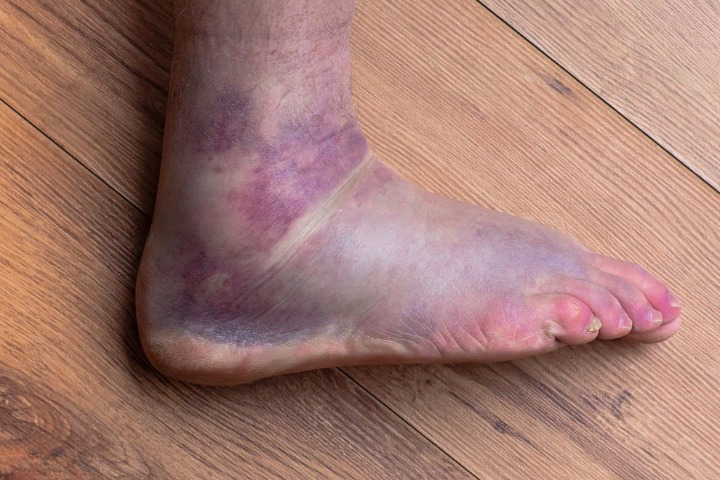Share Post
“Understanding Purple Feet: Causes, Symptoms, and Treatment Options”
Have you ever noticed that your feet have turned purple? If this is the case, you may be asking what is producing the unusual coloring. While it is not a regular occurrence, purple feet may indicate an underlying health condition that needs to be treated.
Purple feet are not usually a life-threatening ailment. It can, however, be an indication of a larger health issue that, if left unchecked, might lead to catastrophic repercussions. Poor circulation in the feet, for example, can raise the chance of developing skin ulcers or infections, which can be difficult to heal and may necessitate medical attention. Untreated foot ulcers can lead to amputation in some circumstances.
Furthermore, underlying medical disorders that can produce purple feet, such as peripheral artery disease, can raise the risk of a heart attack or stroke if left untreated. As a result, if you have persistent or recurring purple feet, as well as other troubling symptoms, you should seek medical assistance. Your doctor can assist you in determining the root cause and recommending appropriate treatment to avoid problems and enhance healing.
We’ll look at some of the most prevalent causes of purple foot, as well as their symptoms and treatment options, in this piece.
Purple Feet Causes
- Poor circulation: Poor circulation is one of the most common reasons for the purple foot. The skin may appear purple or blue when the blood supply to the feet is impeded. A variety of reasons can contribute to this, including peripheral artery disease, blood clots, and Raynaud’s disease.
- Diabetes: Purple feet can occur as a result of inadequate circulation or nerve damage in diabetics. This can also result in skin ulcers that are difficult to treat.
- Foot injuries: such as fractures or sprains, can produce swelling and discoloration. This can cause purple or blue feet.
- Medications: As a side effect, certain medications, such as chemotherapy drugs or anticoagulants, can induce purple foot.
- Cold temperatures can cause the blood vessels in the feet to tighten, resulting in impaired circulation and purple feet.

Purple feet, in addition to the visible staining, may be accompanied by other symptoms. These may include:
- Numbness or tingling
- Swelling
- Pain or discomfort
- Unhealed sores or ulcers
The treatment for purple feet will be determined by the underlying reason. If poor circulation is the cause, your doctor may advise you to make lifestyle changes such as stopping smoking, exercising more, or using compression stockings. Medications may also be provided to enhance blood flow. If your purple feet are caused by an injury, your doctor may advise rest, ice, and elevation. In some circumstances, surgery may be required to remedy the condition.
Controlling blood sugar levels is critical for diabetics to avoid issues like purple feet. Diabetes puts people at a higher risk for foot ulcers and infections, therefore regular foot care is essential.
If you realize your feet have turned purple or blue, visit Feldman & Leavitt Food and Ankle Specialist now while it may be a mild ailment, it could also be a sign of a significant health problem that requires attention. You can feel like yourself again with the correct diagnosis and therapy.
As a general rule, surgical bunion procedures are performed on an outpatient basis in an Alberta Health Services (AHS) approve Surgical Center or in a Hospital. Surgical procedural costs are covered by AHS or the patient may opt for private surgery to avoid a waiting time.

